Laoshan Mountain: A Hidden Gem for Nature Lovers and Pilgrims
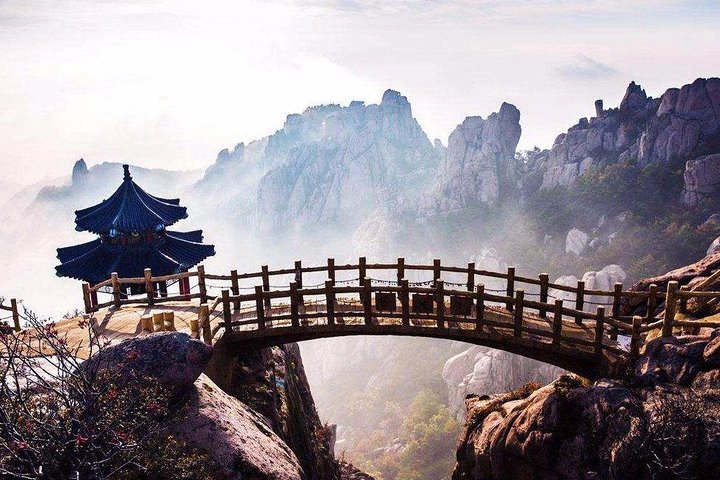
An Essential Guide to Visiting Laoshan Mountain
In This Guide
- An Essential Guide to Visiting Laoshan Mountain
- The Rich History and Legends of Laoshan Mountain
- Main Highlights: What You Absolutely Can’t Miss
- Planning Your Visit: A Practical Guide
- Tickets: Prices, Booking, and Tips
- How to Get There: A Complete Transportation Guide
- Local Cuisine and Accommodation Nearby
- Frequently Asked Questions
- Final Thoughts on Your Trip
Nestled along the shimmering coastline of the Yellow Sea, Laoshan Mountain stands as a testament to the beauty and spirituality of China’s natural wonders. Known as the “No. 1 Coastal Mountain,” this majestic range offers not only breathtaking landscapes but also a rich tapestry of Taoist culture and history. With its dramatic peaks, serene temples, and stunning seascapes, Laoshan Mountain has long captivated the hearts of travelers and seekers of tranquility alike.
A Journey Through Nature and Spirituality
As you embark on your journey to Laoshan, prepare to be enveloped by a serene atmosphere that echoes the whispers of ancient sages. The mountain is dotted with seven main scenic spots, each offering a unique experience, from exhilarating hikes to peaceful temple visits. Here, the air is imbued with the scent of pine and the sound of crashing waves, harmonizing in a symphony that invites introspection and wonder.
Highlights of Your Visit
-
Taiqing Scenic Spot: Home to the majestic Taiqing Palace, the largest and oldest Taoist temple in the region, this area is not only a spiritual haven but also a place of architectural beauty. The palace, which dates back to 140 B.C., showcases the exquisite craftsmanship of the Song Dynasty, making it a must-visit for history enthusiasts.
-
Yangkou Scenic Spot: Experience a harmonious blend of mountains and sea at Yangkou, where you can enjoy panoramic views from Tianyuan, a natural rock formation, and witness the breathtaking sunrises that illuminate the coastline.
-
Jufeng Peak: As the highest point of Laoshan, Jufeng offers a challenging yet rewarding hike, leading to sweeping views that stretch far into the horizon, providing a perfect backdrop for reflection and photography.
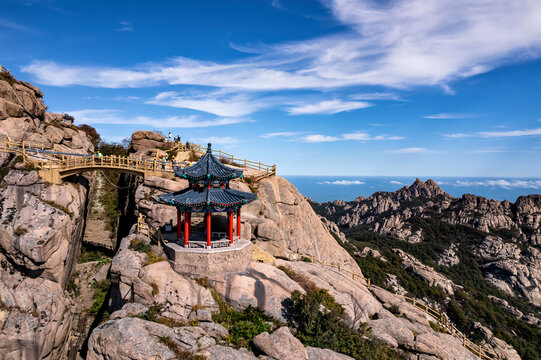
Laoshan Mountain.
Practical Information
- Best Seasons to Visit: The ideal times to explore Laoshan are during the mild months of April to May and September to October, when the weather is pleasant and the scenery is at its most vibrant.
- Visiting Hours: Open daily, with varying hours depending on the season—7:00 AM to 5:30 PM from March to June and September to November, extending to 6:00 AM to 7:00 PM during the summer months.
- Entrance Fees: A modest fee of CNY 90 (April – December) and CNY 60 (January – March) grants you access to this enchanting landscape.
Conclusion
Whether you seek adventure, tranquility, or a deeper connection to Chinese culture, Laoshan Mountain promises an unforgettable experience. Prepare to immerse yourself in the breathtaking beauty of this coastal gem, where nature and spirituality converge, creating a sanctuary for all who wander its paths.
The Rich History and Legends of Laoshan Mountain
Laoshan Mountain, a majestic coastal range located near the bustling city of Qingdao, is steeped in rich history and legends that elevate its status from mere scenic beauty to a cultural treasure of China. Revered as a sacred site by Taoists, this mountain has long been a place of worship, inspiration, and mystical lore.
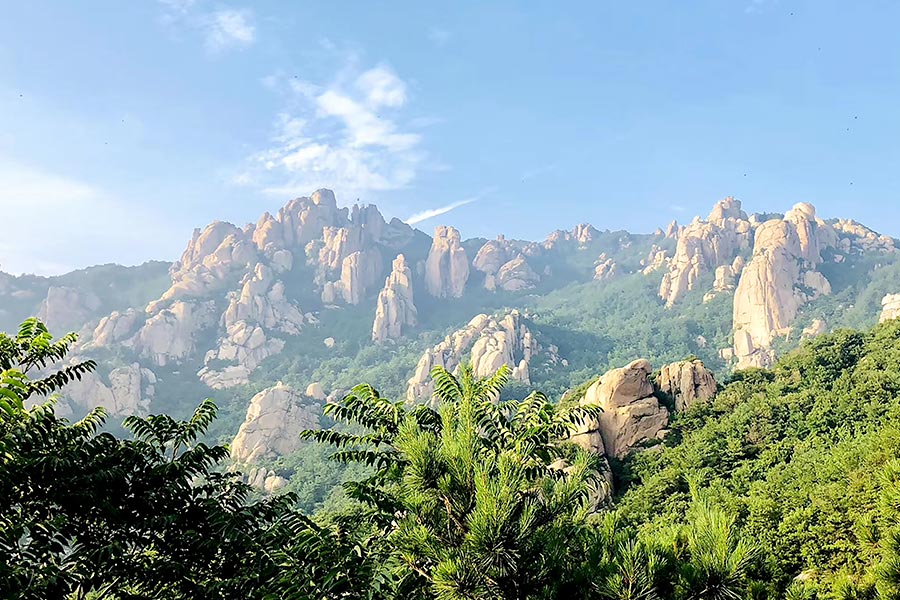
Laoshan Mountain.
A Historical Overview
The history of Laoshan Mountain dates back over two millennia. It has been a significant site for Taoism since its establishment as a spiritual sanctuary. The most notable landmark, Taiqing Palace, was built in 140 B.C. and is considered the birthplace of Taoism in the region. With a history spanning more than 2,000 years, the palace has witnessed countless renovations and restorations, retaining elements of the architectural style from the Song Dynasty, which is a rarity among religious structures in China.
Laoshan’s prominence as a Taoist mountain is underscored by its association with legendary figures. It is said that Laozi, the founder of Taoism, once visited this mountain, and his teachings on harmony and balance resonate through the tranquil landscapes. Statues and temples dedicated to Laozi can still be found scattered across the mountain, attracting pilgrims and tourists alike who seek wisdom and tranquility.
Legends and Folklore
Laoshan’s allure extends beyond its historical significance; it is a cradle of colorful legends that enhance its mystique. One of the most enchanting tales speaks of the Eight Immortals, legendary figures in Chinese mythology who are believed to have journeyed to Laoshan in search of spiritual enlightenment. According to local lore, they each left behind a piece of their essence in the form of unique rock formations and natural features throughout the mountain. Visitors often embark on quests to find these immortal remnants, each representing a different aspect of life and wisdom.

Laoshan Mountain.
Another captivating story revolves around the Dragon King of the East Sea. It is said that the Dragon King, concerned about the balance of nature, frequently visited Laoshan to meditate and seek the counsel of the mountain’s spirits. His presence is believed to have blessed the area with abundant water sources and lush vegetation, making Laoshan a sanctuary of biodiversity.
Cultural Significance
Laoshan is not only a natural wonder but also a cultural hub that embodies the essence of Chinese spirituality and philosophy. The mountain is dotted with ancient temples, each a testament to the enduring relationship between nature and spirituality. The Taiqing Palace serves as a center for Taoist practices, where rituals and meditation sessions are held, inviting visitors to experience the profound depth of Taoist traditions.
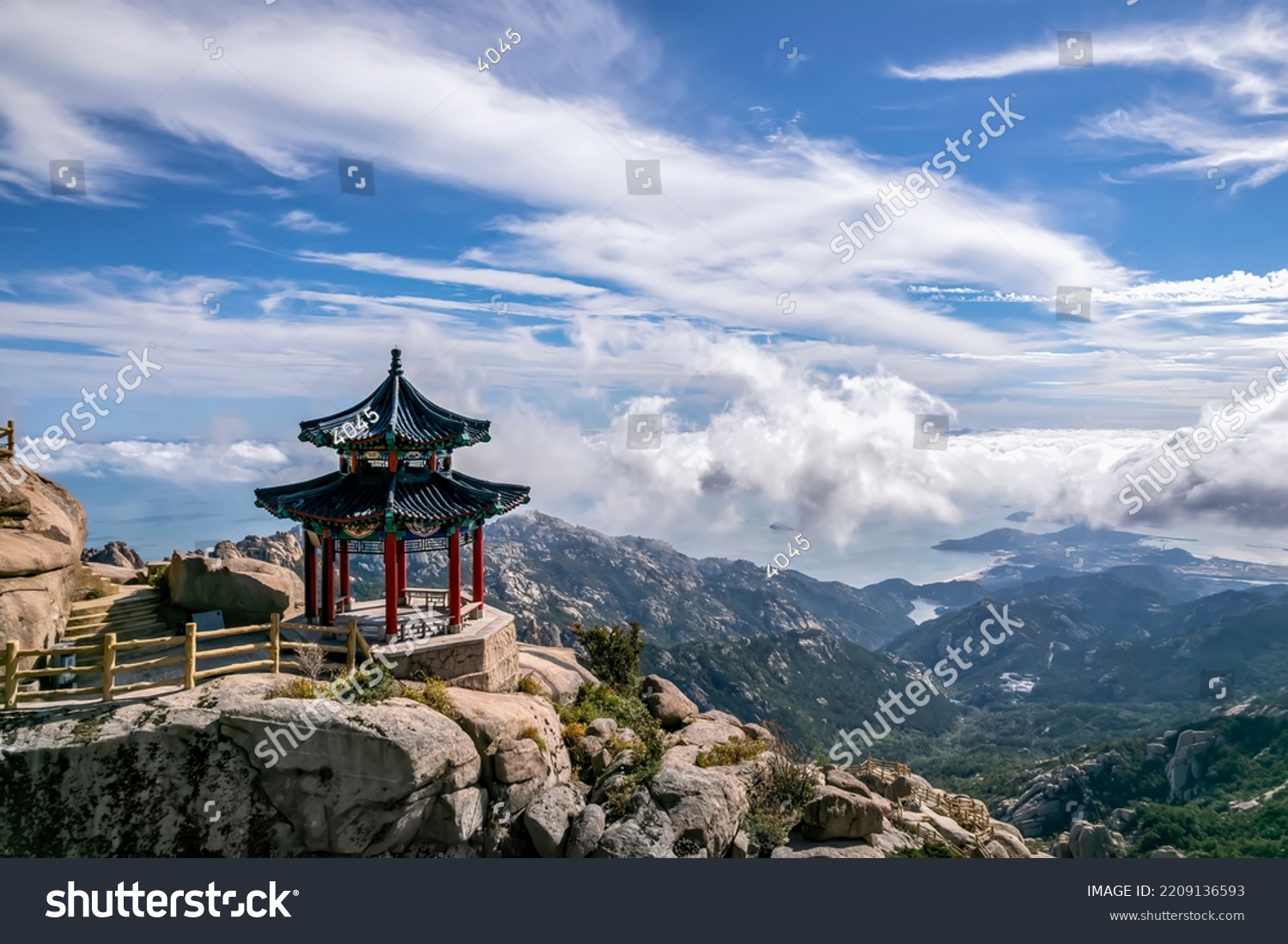
Laoshan Mountain.
The natural beauty of Laoshan has inspired poets and artists for centuries. Its rugged cliffs, cascading waterfalls, and serene sea views have provided a backdrop for countless works of art and literature. The interplay of light and shadow across the mountain’s peaks at dawn and dusk creates a picturesque scene that has been immortalized in Chinese art, reflecting the harmony between humanity and nature.
A Destination for Pilgrimage and Reflection
To this day, Laoshan Mountain remains a pilgrimage site for devout Taoists and travelers seeking solace. The serene environment, coupled with the echoes of ancient wisdom, offers a unique atmosphere for reflection and rejuvenation. Hiking trails meander through the lush landscape, leading to panoramic views that have inspired awe and introspection.

Laoshan Mountain.
In conclusion, Laoshan Mountain is a testament to China’s rich history and vibrant legends. Its sacred temples, mythical stories, and breathtaking landscapes create an unparalleled tapestry of culture and spirituality. For international travelers interested in exploring the depths of Chinese history and culture, a visit to Laoshan is not just a journey through scenic vistas but also an immersion into the profound heritage that shapes this remarkable nation.
Main Highlights: What You Absolutely Can’t Miss
Discover the Wonders of Laoshan Mountain
Laoshan Mountain, known as the “No. 1 Coastal Mountain,” is a breathtaking destination that seamlessly combines stunning natural beauty with rich cultural heritage. Nestled along the Yellow Sea in Qingdao, this majestic mountain range is renowned for its impressive peaks, serene landscapes, and historical Taoist sites. Here are the essential highlights you absolutely cannot miss during your visit to Laoshan Mountain.
1. Taiqing Scenic Spot (太清游览区)
Attraction Highlights:
– Taiqing Palace (太清宫): This is the largest and oldest Taoist temple in the region, dating back over 2,000 years to 140 B.C. The architecture showcases the classical style of the Song Dynasty, making it a rare find among religious buildings in China. The palace is comprised of three main halls—Sanguan Hall, Sanqing Hall, and Sanhuang Hall—and is surrounded by seven peaks that create a sheltered, mild climate.
– Nature’s Embrace: The Taiqing area is not only a cultural hub but also a natural paradise, boasting lush vegetation and a pleasant climate perfect for hiking and exploring.
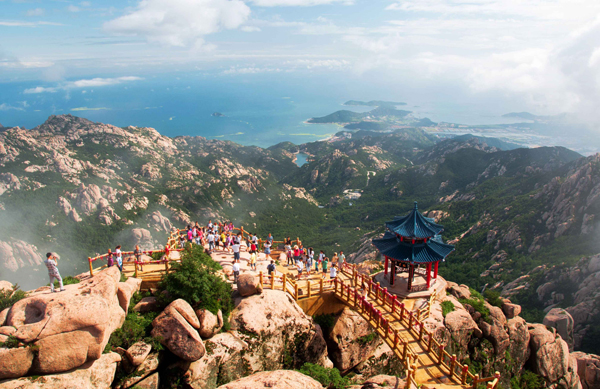
Laoshan Mountain.
Practical Tips:
– Entrance Fee: CNY 27 per person for Taiqing Palace.
– Cable Car: CNY 45 one-way, CNY 80 round trip.
2. Yangkou Scenic Spot (仰口游览区)
Attraction Highlights:
– Breathtaking Views: Yangkou offers stunning vistas of the Yellow Sea and the mountain peaks. The natural stone formations, such as Tianyuan, provide panoramic views of the coastline.
– Cultural Richness: Hidden within the lush bamboo and pine forests is Taiping Palace, known as the “Palace on the Sea,” offering a serene atmosphere for reflection and admiration of nature.
– Sunrise Spectacle: For early risers, the sunrise from Lion Peak is an unforgettable experience, painting the sky with hues of orange and pink.
Practical Tips:
– Adventure Awaits: To reach Tianyuan, you’ll navigate through Mitian Cave, an exciting and slightly challenging path that adds to the adventure.
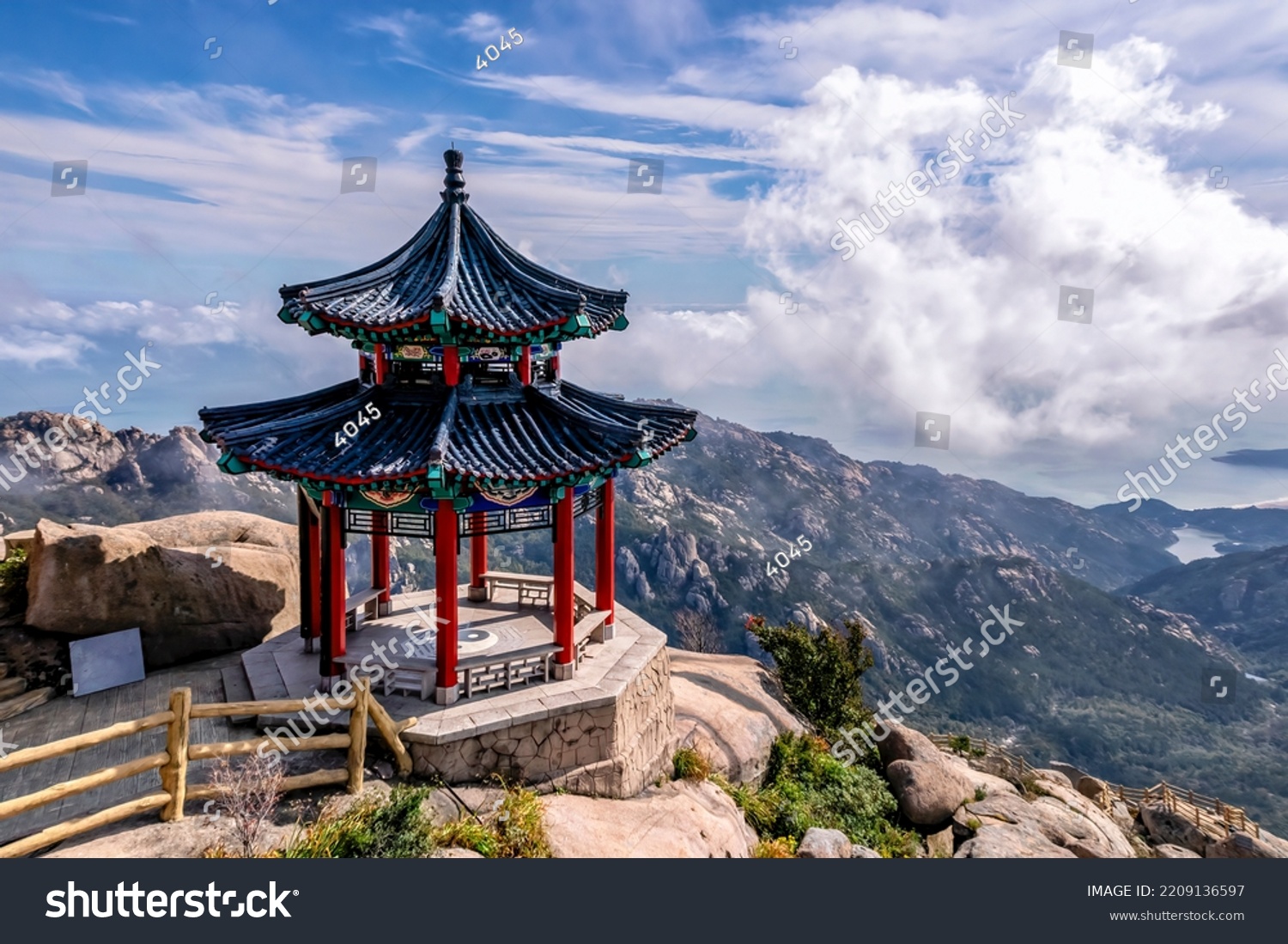
Laoshan Mountain.
3. Jufeng Peak (巨峰)
Attraction Highlights:
– The Highest Point: Jufeng, standing at an impressive 1,133 meters, is the pinnacle of Laoshan Mountain. The hike to the summit is invigorating, with trails that wind through lush forests and rocky outcrops.
– Majestic Views: From the top, enjoy breathtaking views of the surrounding landscapes, including the winding coastline and the vastness of the Yellow Sea.
Practical Tips:
– Preparation is Key: The hike can be strenuous, so wear appropriate footwear and carry plenty of water.
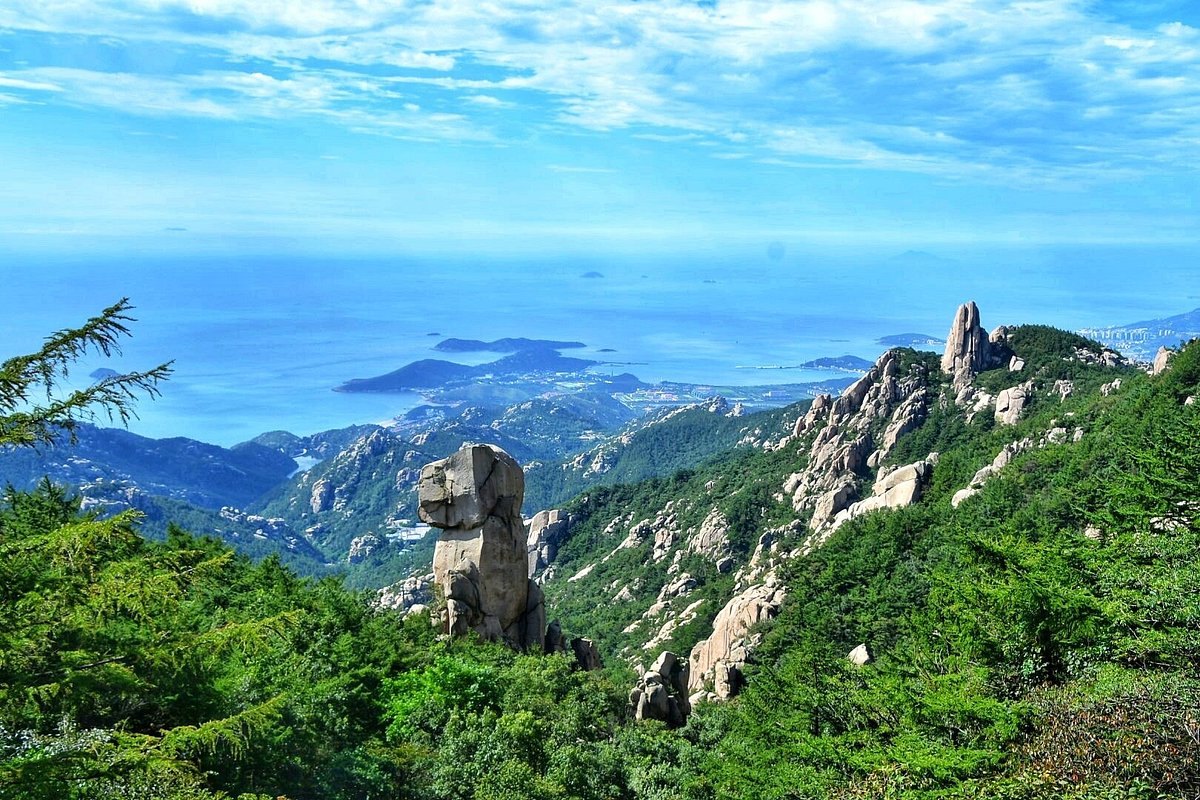
Laoshan Mountain.
4. Beijiushui (北九水)
Attraction Highlights:
– Natural Oasis: Known for its cool, clear waters and stunning waterfalls, Beijiushui is a refreshing retreat during the summer months.
– Scenic Walks: The area features well-maintained paths that allow visitors to enjoy the tranquil beauty of cascading streams and serene pools.
Practical Tips:
– Best Time to Visit: The ideal seasons for exploring Laoshan are April to May and September to October, when the weather is mild and the scenery is at its most vibrant.
5. Cultural Significance
Laoshan is not just a natural wonder; it holds deep cultural and spiritual significance as a prominent site in Taoism. The presence of ancient temples and shrines scattered throughout the mountain adds an enriching layer to your visit, inviting exploration and contemplation.

Laoshan Mountain.
Conclusion
Laoshan Mountain is a treasure trove of natural beauty and cultural heritage, making it a must-visit destination for anyone traveling to China. Whether you seek adventure, tranquility, or cultural exploration, Laoshan offers an unforgettable experience that will leave you inspired and enriched. Don’t forget to take in the stunning landscapes and immerse yourself in the rich history of this magnificent coastal mountain!
Planning Your Visit: A Practical Guide
Essential Travel Tips for Discovering Laoshan Mountain
Laoshan Mountain, often referred to as the “No. 1 Coastal Mountain,” offers a unique blend of natural beauty and rich cultural heritage, making it a must-visit destination in Qingdao. This guide will help you navigate your visit, ensuring a memorable experience.
Getting There
- Location: Laoshan Mountain is located in the Laoshan District of Qingdao, about 30 kilometers from the city center.
- Transportation:
- By Bus: Several local buses connect Qingdao city to Laoshan Mountain. Look for bus lines that go directly to the scenic area.
- By Taxi: Taxis are readily available and provide a convenient option for reaching the mountain directly.
- By Car: If you prefer to drive, rental services are available in Qingdao. Ensure you have a GPS or map, as some areas may not be well-signposted.
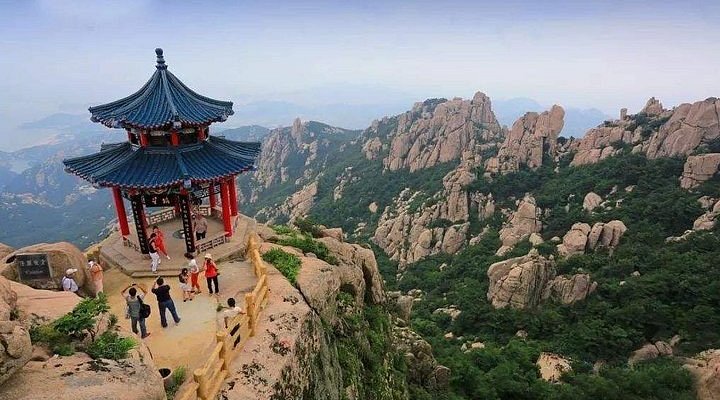
Laoshan Mountain.
Best Time to Visit
- Ideal Seasons: The best times to visit are during spring (April to May) and autumn (September to October) when the weather is mild and the natural scenery is at its most vibrant.
- Operating Hours:
- March – June, September – November: 07:00 AM – 05:30 PM
- July – August: 06:00 AM – 07:00 PM
- December – February: 07:30 AM – 05:00 PM
Entrance Fees
- Ticket Prices:
- CNY 90 (April – December)
- CNY 60 (January – March)
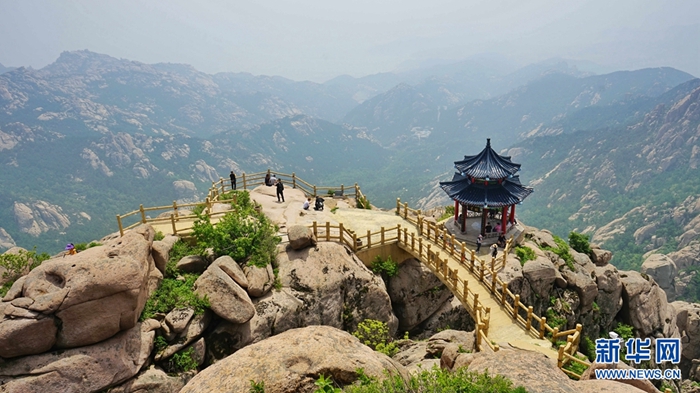
Laoshan Mountain.
Must-See Attractions
Laoshan Mountain is home to several scenic spots, each offering unique experiences:
- Taiqing Scenic Spot (太清游览区):
- Main Attraction: Taiqing Palace, one of the oldest Taoist temples in the region, is a highlight here. Dating back to 140 B.C., its architecture reflects the Song Dynasty style.
- Activities: Explore the temple complex and enjoy the surrounding natural beauty.
-
Cable Car: A convenient way to ascend, costing CNY 45 one way or CNY 80 round trip.
-
Yangkou Scenic Spot (仰口游览区):
- Highlights: Known for stunning views of the Yellow Sea, this area features dramatic cliffs and sandy beaches. The “Palace on the Sea,” Taiping Palace, is nestled amid lush greenery.
-
Adventure: Hike to the top of Lion Peak for breathtaking sunrises and panoramic views.
-
Jufeng Peak:
- As the highest peak, it offers challenging hikes and rewarding vistas. It’s ideal for those looking to immerse themselves in nature while experiencing the thrill of climbing.
Cultural Insights
- Taoist Heritage: Laoshan is not only famous for its natural beauty but also its rich Taoist culture. The temples scattered across the mountain are essential to understanding the local spiritual practices.
- Local Customs: When visiting temples, it’s respectful to maintain a quiet demeanor and observe local customs, such as bowing before statues and refraining from taking photos in certain areas.
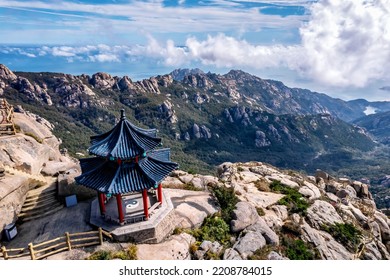
Laoshan Mountain.
Practical Considerations
- What to Wear: Dress in layers, as temperatures can vary significantly between the base and the peaks. Comfortable hiking shoes are a must.
- What to Bring: Carry water, snacks, sunscreen, and a camera to capture the stunning landscapes. A light jacket may be helpful, especially in the mornings and evenings.
- Safety Tips: Stay on marked trails and be cautious of sudden weather changes. Mobile service may be limited in some areas, so be prepared with a physical map if necessary.
Local Accommodation and Dining
- Where to Stay: There are various hotels and guesthouses in Qingdao that cater to different budgets. Staying in the city allows easy access to both the mountain and urban attractions.
- Dining Options: Sample local cuisine in Qingdao, famous for its seafood, especially fresh clams and the renowned Tsingtao beer.
By planning thoughtfully and respecting the local culture, your visit to Laoshan Mountain will be an enriching experience, blending natural beauty with profound cultural insights. Happy travels!
Tickets: Prices, Booking, and Tips
Ticket Information for Laoshan Mountain
Visiting Laoshan Mountain, renowned for its stunning coastal views and rich Taoist heritage, is an experience not to be missed. To help you plan your visit effectively, here’s a detailed rundown of ticket prices, booking options, and essential tips for your journey.
Ticket Prices
- Standard Admission:
- From April to December: CNY 90
-
From January to March: CNY 60
-
Taiqing Palace Admission:
-
CNY 27 per person (separate from the main entrance fee)
-
Taiqing Cable Car:
- One-way: CNY 45
- Round trip: CNY 80
Opening Hours
- March to June & September to November: 07:00 – 17:30
- July & August: 06:00 – 19:00
- December to February: 07:30 – 17:00
Booking Tips
-
Purchase Tickets in Advance: To avoid long queues, especially during peak seasons (April-May and September-October), consider purchasing your tickets online or through local travel agencies.
-
Group Discounts: If traveling with a group, inquire about potential discounts. Many tour operators offer package deals that include guided tours and transportation.
-
Check for Special Events: Occasionally, the park hosts special events or festivals. Checking their website or contacting local tourism offices can provide insights into these activities.
-
Visit Early or Late: For a more serene experience and to capture stunning photographs, aim for early mornings or late afternoons when the light is softer, and the crowds are thinner.
-
Explore Scenic Spots: Make sure to allocate time to visit the seven main scenic spots, particularly Taiqing, Yangkou, and Jufeng, each offering unique landscapes and cultural experiences.
Contact Information
If you need further assistance or wish to book customized tours, reach out to local travel agencies specializing in Qingdao. You can contact them via email or phone for quick responses:
- Email: [email protected]
- Phone: +86-28-85223672 / +86-28-85227275 / +86-191-3897-0032
By planning your visit thoughtfully, you can fully immerse yourself in the natural beauty and cultural depth of Laoshan Mountain. Whether you are hiking its trails or exploring its ancient temples, every moment will enrich your understanding of this iconic site in Chinese history and culture.
How to Get There: A Complete Transportation Guide
Getting to the Majestic Laoshan Mountain
Nestled along the shores of the Yellow Sea, Laoshan Mountain (青岛崂山) is not only a natural wonder but also a cultural treasure, steeped in Taoist history and breathtaking vistas. Whether you’re an adventurous hiker, a history enthusiast, or simply seeking tranquility in nature, reaching this iconic site from Qingdao is both straightforward and rewarding. Here’s how to navigate your way to this stunning destination.
Arriving in Qingdao
By Air:
– Qingdao Liuting International Airport (TAO) is the primary airport serving the city. It connects to major Chinese cities and several international destinations.
– Upon landing, you can take a taxi or airport shuttle to reach the city center.
By Train:
– Qingdao is well-connected by rail, making it accessible from major cities like Beijing, Shanghai, and Jinan. The Qingdao Railway Station is conveniently located within the city.
– High-speed trains are available, cutting travel time significantly.
Getting to Laoshan Mountain
Once you’re in Qingdao, there are several options for reaching Laoshan Mountain:
1. By Public Transportation:
- Bus:
- Route 301: This bus departs from the Qingdao Railway Station and takes you directly to the Laoshan Scenic Area. It’s a cost-effective option for travelers.
- Route 304: Another convenient bus that connects various parts of the city to the entrance of the scenic area.
Cost: Approximately CNY 5-10.
- Metro:
- The Qingdao Metro Line 3 connects to the Laoshan area. You can take the metro to Laoshan Scenic Area Station, which places you close to the entrance.
2. By Taxi or Ride-Hailing Services:
- Taxis in Qingdao are relatively inexpensive and can take you directly to the entrance of Laoshan Mountain.
- Ride-hailing apps like Didi are widely used and can be a convenient alternative.
Estimated Cost: CNY 50-100 from the city center, depending on traffic.
3. By Tour Package:
- For a more hassle-free experience, consider booking a guided tour that includes transportation. Many local travel agencies offer packages that cover transportation, entrance fees, and guided tours of the main scenic spots.
Tips for the Journey
- Best Time to Visit: The ideal months to explore Laoshan Mountain are from April to May and September to October, when the weather is mild and the scenery is at its best.
- Entrance Fees: Be prepared to pay an entrance fee of CNY 90 (April to December) or CNY 60 (January to March). Additional fees may apply for certain attractions like the Taiqing Cable Car.
- Opening Hours: Laoshan Mountain has varying hours depending on the season, so check ahead to plan your visit accordingly.
Exploring Laoshan Mountain
Once you arrive, be sure to explore its seven main scenic spots, including Taiqing and Yangkou, each offering unique landscapes and cultural experiences. The mountain’s trails cater to all fitness levels, making it accessible for everyone from casual walkers to seasoned hikers.
In summary, getting to Laoshan Mountain is a breeze, and the journey is well worth it. With its rich tapestry of history and stunning natural beauty, this coastal gem awaits your discovery. Enjoy your visit!
Local Cuisine and Accommodation Nearby
Discovering Local Flavors and Comfortable Stays at Laoshan Mountain
As you explore the breathtaking views and cultural heritage of Laoshan Mountain, you’ll undoubtedly work up an appetite. The area is rich not only in natural beauty but also in culinary delights that reflect the local culture. Coupled with a selection of accommodations nearby, your journey promises to be both satisfying and comfortable.
Local Cuisine to Savor
- Seafood Dishes
Being located by the Yellow Sea, Qingdao boasts an array of fresh seafood. Don’t miss trying: - Grilled Squid: Tender and smoky, often served with a spicy dipping sauce.
-
Clam Soup: A comforting bowl of fresh clams, herbs, and spices, perfect for warming up after a day of hiking.
-
Tsingtao Beer
Originating from Qingdao, Tsingtao Beer is a must-try. Pair it with local snacks like peanuts or fried tofu for a delightful experience. Many restaurants offer tastings, allowing you to sample this iconic brew. -
Shandong Cuisine
Known for its focus on fresh ingredients and simple flavors, Shandong cuisine reflects the local palate. Consider ordering: - Braised Pork with Garlic Sauce: A rich and savory dish that highlights the region’s culinary traditions.
-
Noodle Dishes: Handmade noodles, often served in broth or stir-fried with vegetables and meat.
-
Vegetarian Options
For those seeking lighter fare, many establishments offer vegetarian dishes inspired by Taoist cuisine, emphasizing fresh vegetables and tofu.
Where to Stay
For a seamless experience, a selection of accommodations near Laoshan Mountain caters to various preferences and budgets:
-
Laoshan Scenic Area Hotel
Located within the scenic area, this hotel offers breathtaking views of the mountains and the sea. Amenities include comfortable rooms and an in-house restaurant serving local cuisine. -
Qingdao Feiyang International Hotel
Just a short drive from the mountain, this modern hotel combines luxury with convenience. Guests can enjoy spacious rooms, a fitness center, and easy access to both the beach and hiking trails. -
Tsingtao International Youth Hostel
Ideal for budget travelers, this hostel provides a friendly atmosphere with dormitory-style and private rooms. It’s a great place to meet fellow adventurers and share stories after a day of exploration. -
Homestays
For a more authentic experience, consider booking a homestay with local families. These accommodations often include meals, providing a perfect opportunity to taste home-cooked dishes and immerse yourself in local culture.
Final Thoughts
Whether you’re indulging in the flavors of Qingdao or resting in a cozy hotel after a day spent conquering the peaks of Laoshan, the combination of local cuisine and comfortable accommodations will enhance your travel experience. Enjoy the journey as much as the destination!
Frequently Asked Questions
Frequently Asked Questions about Laoshan Mountain
1. What is the best time to visit Laoshan Mountain?
The ideal seasons to explore Laoshan Mountain are April to May and September to October. During these months, the weather is mild and the natural scenery is at its most vibrant.
2. How much does it cost to enter Laoshan Mountain?
The entrance fee varies by season: it is CNY 90 from April to December and CNY 60 from January to March. Be sure to check for any additional fees for specific attractions within the park.
3. How long should I plan to spend at Laoshan Mountain?
A full day is typically sufficient to experience the main attractions, including hiking to Jufeng Peak and visiting the scenic spots of Taiqing and Yangkou.
4. What are the main attractions at Laoshan Mountain?
Laoshan is home to several scenic spots, with the most popular being:
– Taiqing Scenic Spot: Known for the historic Taiqing Palace and lush surroundings.
– Yangkou Scenic Spot: Offers breathtaking sea views and a chance to see sunrise from Lion Peak.
– Jufeng Peak: The highest peak, providing stunning panoramic views.
5. Is there public transportation available to reach Laoshan Mountain?
Yes, you can take local buses or taxis from Qingdao city center to the Laoshan Scenic Area. Buses are a cost-effective option and provide a scenic ride to the base of the mountain.
6. Are there any facilities for hiking at Laoshan Mountain?
Yes! The mountain features well-marked trails, and there are cable cars available for specific scenic spots like Taiqing. Resting areas and basic amenities can also be found along the hiking routes.
7. Can I find food and accommodations near Laoshan Mountain?
Yes, there are various dining options in the vicinity, including local eateries serving traditional Chinese dishes. While accommodations are available in Qingdao city, there are also guesthouses near the mountain for those who prefer to stay close to nature.
8. What should I pack for a visit to Laoshan Mountain?
Visitors should wear comfortable hiking shoes, bring plenty of water, and pack snacks. It’s advisable to carry a light jacket, as temperatures can drop in the evening, especially in the spring and autumn months. Don’t forget to bring a camera to capture the stunning landscapes!
Final Thoughts on Your Trip
As your journey through the enchanting landscapes and rich cultural heritage of Laoshan Mountain comes to a close, it’s essential to reflect on the myriad experiences this remarkable destination offers.
Laoshan is not merely a mountain; it embodies the harmonious blend of nature and spirituality. From the towering Jufeng Peak to the tranquil shores of Yangkou, each step reveals a new facet of this coastal gem. The Taoist temples, particularly the ancient Taiqing Palace, are windows into the philosophical depths of Chinese culture, inviting visitors to connect with the tranquility and wisdom of centuries past.
Key Takeaways for Your Visit:
- Breathtaking Views: The panoramic vistas from the mountain peaks are simply unforgettable. Don’t miss the sunrise at Lion Peak for a truly magical experience.
- Cultural Richness: Engage with the spiritual heritage of the area by visiting its historic temples. Each structure tells a story of devotion and architectural prowess that dates back thousands of years.
- Outdoor Adventures: Whether you choose to hike the rugged trails or stroll along the coastal paths, the natural beauty of Laoshan will invigorate your spirit and refresh your senses.
- Seasonal Splendor: Plan your visit during the spring or autumn months for the best weather and vibrant scenery that complements the mountain’s majestic allure.
As you leave this storied landscape behind, carry with you the memories of Laoshan’s serene beauty and profound culture. Allow its spirit to inspire your journey ahead, wherever your travels may lead. Embrace the essence of this “No. 1 Coastal Mountain” as a reminder of the breathtaking interplay between nature and history, and let it encourage you to explore more of China’s unique treasures in the future. Safe travels!